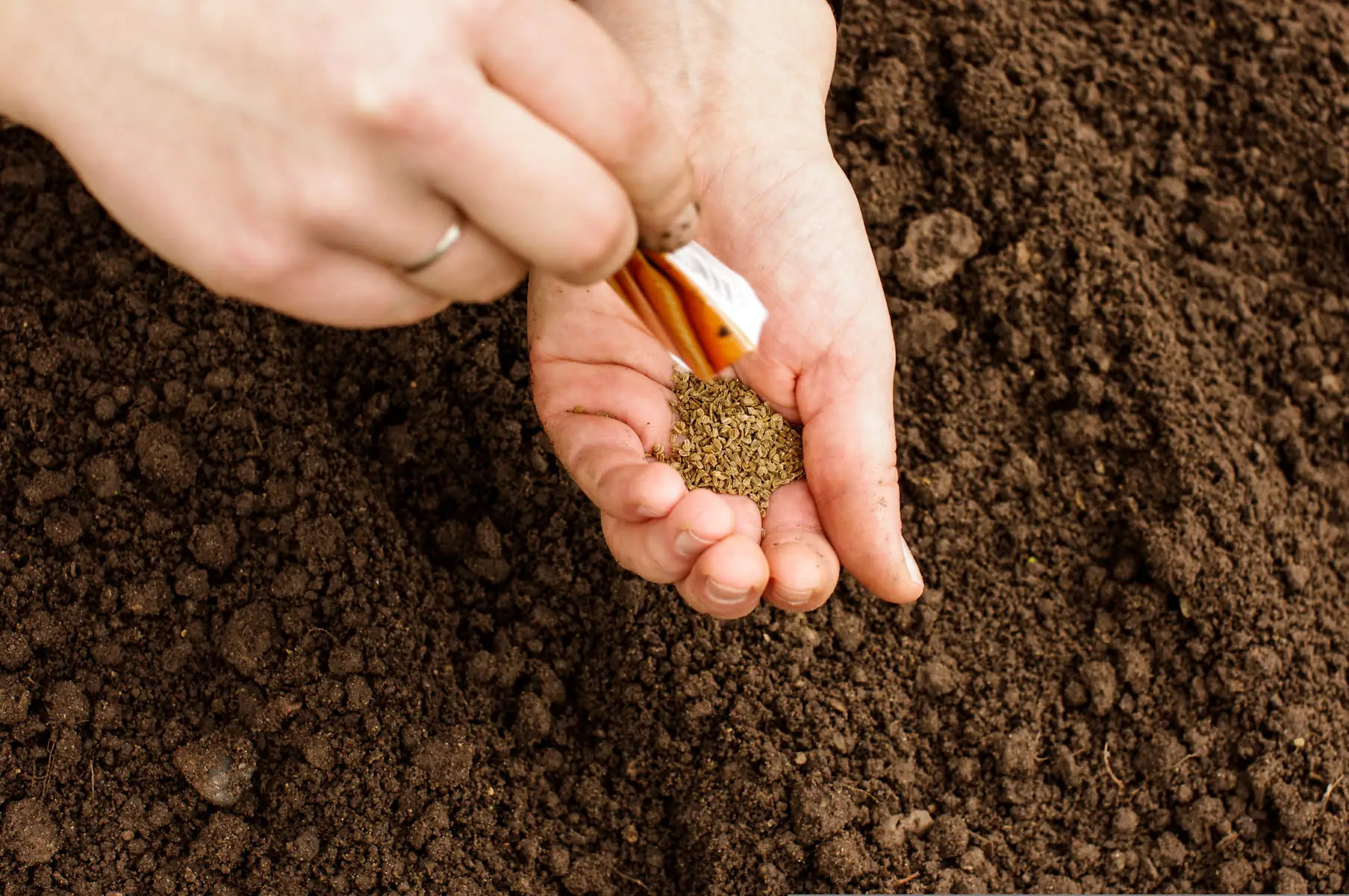Soil is one of the earth’s most important natural resources. Healthy soils are central to delivering agricultural resilience, mitigating climate change, meeting emission reduction targets, securing human health, food and water security, biodiversity, and economic growth.
The USDA Natural Resources Conservation Service defines soil health as “the continued capacity of soil to function as a vital living ecosystem that sustains plants, animals, and humans”[1].
Healthy soils underpin human existence. When soils fail, civilisations fail. Reduced soil quality and function impacts our economy, environment, and every aspect of life. This is exacerbated by a changing climate that is bringing more frequent and intense climatic events like drought, bushfires, and storms[2].

As concern grows for the availability of farming land across the world, more research is being conducted on how to improve soil health and maintain viable crop production. Research into improving farming techniques and increasing utilisation of the soil is the next step in understanding how organic farming techniques can help better understand these issues.
Internationally, a study of Europe’s soils found only 30-40% of European soils were considered healthy[16]. The Soil Association in the UK has produced a report highlighting concerns around soil health and has offered several suggestions to help monitor soil health. These include[17]:
Coincidentally, this report also highlighted the need for a Soil Strategy for the United Kingdom.
In the United States, the Rodale Institute has completed research on soil carbon and regenerative agriculture through its Farming System’s Trials, designed to compare regenerative farming principles such as[18]:
These trials have shown positive results, including:
These are promising developments that could allow for an improved understanding of Australian soil health and the effectiveness of regenerative and organic farming techniques in Australian conditions. The announcement in December 2021 of a collaboration between PWC, the Macdoch Foundation and the National Farmers Federation to conduct a research program to identify links between natural capital (such as soils) and farm profitability is one such positive example[19].
This is an important first step towards understanding the benefits of protecting soils in an Australian context as well as the advantages of organic farming practices. AOL is supportive of this project, and hopes the initiative provides opportunities for organic farmers to demonstrate their management practices and the opportunities they provide for soil health.

Regardless of evolving agricultural technology, maintaining soils for agricultural use will be important as the planet faces the ever-increasing environmental challenges of the 21st century. Data from countries such as the United States show the use of organic practices have helped improve farm yields and the resilience of soils against increased climate volatility.
In Australia, the development of a National Soil Strategy is an opportunity to build on the understanding of the role of organic farming in improving soil health. Organic farming practices have significant potential in the implementation of the strategy, and AOL will work with the Government to incorporate the benefits of organic farming into this strategy.
AOL will continue to support and promote organic agricultural systems that build soil organic matter and will advocate best practice for this within the industry, avoiding the use of chemical fertilisers and synthetic pesticides that are negative for soil health.
[1] United States Department of Agriculture 2012 ‘Farming in the 21st Century a practical approach to improve Soil Health’ Natural Resources Conservation Service, https://www.nrcs.usda.gov/sites/default/files/2023-04/Farming_in_the_21st_Century_expanded_version.pdf.
[2] Australian Government 2021, National Soil Strategy, Commonwealth of Australia, Canberra, viewed 20 October 2021, https://www.awe.gov.au/agriculture-land/farm-food-drought/natural-resources/soils#national-soil-strategy. [3] Lal, R., Follett, R. F., Stewart, B. A. & Kimble, J. M. Soil carbon sequestration to mitigate climate change and advance food security. Soil Sci. Dec. 2007 172, 943–956 (2007). [4] Lal, R. Soil carbon sequestration to mitigate climate change. Geoderma 123, 1–22 (2004)[5] Hasanaliyeva, G.; Chatzidimitrou, E.; Wang, J.; Baranski, M.; Volakakis, N.; Pakos, P.; Seal, C.; Rosa, E.A.S.; Markellou, E.; Iversen, P.O.; et al. Effect of organic and conventional Production Methods on Fruit Yield and Nutritional Quality Parameters in Table Grapes and Wine made from three traditional Cretan Grape Varieties; Results from a Farm Survey. Foods 2021, 10, 476.
[6] Jones, R.L.; Norris, F.A. Factors affecting degradation of aldicarb and ethoprop. J. Nematol. 1998, 30, 45–55. [7] Van Bniggen, A.H.; Termorskuizen, A.J. Integrated approaches to root disease management in organic farming systems. Aust.Plant Pathol. 2003, 32, 141–156. [8] Martinez, D.A.; Loening, U.E.; Graham, M.C. Impacts of glyphosate-based herbicides on disease resistance and health of crops: A review. Environ. Sci. Eur. 2018, 30, 2. [9] Tal, A. Making conventional agriculture environmentally friendly: Moving beyond the glorification of organic agriculture and the demonization of conventional agriculture. Sustainability 2018, 10, 1078. [10] Kim, J.J.; John, K.M.; Hae-Kyung, M.; Jin, K.; Enkhtaivan, G.; Kim, D.H. Morphological and biochemical variation of Chinese cabbage (Brassica rapa spp. Pekinensis) cultivated using different agricultural practices. J. Food Compos. Anal. 2014, 36, 12–23. [11] Ansari, R.A.; Mahmood, I. Optimization of organic and bio-organic fertilizers on soil properties and growth of pigeon pea. Sci.Hortic. 2017, 226, 1–9. [12] Haghighi, R.S.; Critchley, N.; Leifert, C.; Eyre, M.; Cooper, J. Individual and interactive effects of crop type and management on weed and seed bank composition in an organic rotation. Int. J. Plant Prod. 2013, 7, 243–268. [13] Rempelos, L., Baranski, M., Wang, J., Adams, T. N., Adebusuyi, K., Beckman, J. J., … & Leifert, C. (2021). Integrated Soil and Crop Management in Organic Agriculture: A Logical Framework to Ensure Food Quality and Human Health?. Agronomy, 11(12), 2494. [14] Australian Government 2021, ‘National Soil Strategy’ Commonwealth of Australia, https://www.awe.gov.au/sites/default/files/documents/national-soil-strategy.pdf. [15] Australian Government 2021, Commonwealth Interim Action Plan, Commonwealth of Australia, Canberra, viewed 15 November 2021, https://www.awe.gov.au/sites/default/files/documents/commonwealth-interim-action-plan-national-soil-strategy.pdf. [16] Veerman et al (2020) ‘Caring for soil is caring for life’ (independent report written for the European Commission), https://op.europa.eu/en/web/eu-law-and-publications/publication-detail/-/publication/32d5d312-b689-11ea-bb7a-01aa75ed71a1. [17] Payton, Louise, 2021 ‘Saving Our Soils: Healthy soils for our climate, nature and health’, UK Soil Association. [18] Moyer et al 2020 ‘Regenerative Agriculture and the Soil Carbon Solution’ Rodale Institute, https://rodaleinstitute.org/wp-content/uploads/Rodale-Soil-Carbon-White-Paper_v11-compressed.pdf. [19] National Farmers Federation, ‘Generational study to help shape farming for the future’, Media Release, accessed 9 December 2021, https://nff.org.au/media-release/generational-study-to-help-shape-farming-for-the-future/.